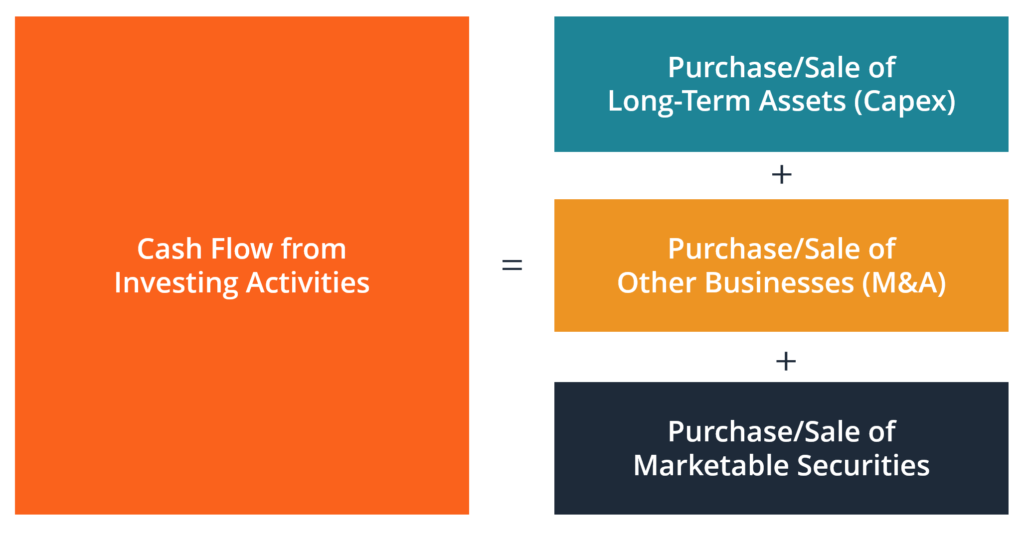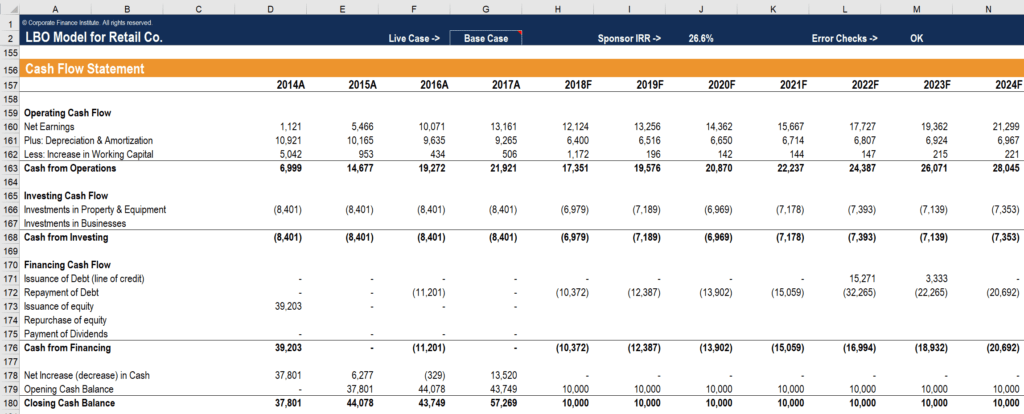
Over 2 million + professionals use CFI to learn accounting, financial analysis, modeling and more. Unlock the essentials of corporate finance with our free resources and get an exclusive sneak peek at the first chapter of each course. Start Free
Cash Flow from Investing Activities is the section of a company’s cash flow statement that displays how much money has been used in (or generated from) making investments during a specific time period. Investing activities include purchases of long-term assets (such as property, plant, and equipment), acquisitions of other businesses, and investments in marketable securities (stocks and bonds).

Let’s look at an example of what investing activities include. In this section of the cash flow statement, there can be a wide range of items listed and included, so it’s important to know how investing activities are handled in accounting.
Investing activities can include:
There are more items than just those listed above that can be included, and every company is different. The only sure way to know what’s included is to look at the balance sheet and analyze any differences between non-current assets over the two periods. Any changes in the values of these long-term assets (other than the impact of depreciation) mean there will be investing items to display on the cash flow statement.
Let’s look at an example using Amazon’s 2017 financial statements. As you can see below, investing activities include five different items, which total to arrive at the net cash provided by (used in) investing. Let’s take a closer look at each of these items for Amazon.
Amazon’s investing activities include:

As you can see in Amazon’s numbers, the main uses of cash for investing have been in purchasing property/equipment/software/websites, acquiring other businesses, and buying marketable securities (stocks and bonds).
It’s also important to point out that the purchase of PP&E (CapEx) has been fairly proportional to depreciation, which indicates the company is consistently reinvesting to keep its assets in good shape.
Now that you have a solid understanding of what’s included, let’s look at what’s not included.
Not included items are:
In financial modeling, it’s critical to have a solid understanding of how to build the investing section of the cash flow statement. The main component is usually CapEx, but there can also be acquisitions of other businesses. This section is usually pretty straightforward.
Below are an example and screenshot of what this section looks like in a financial model. Notice how every year the company has “Investments in Property & Equipment,” which are its capital expenditures. There are no acquisitions (“Investments in Businesses”) in any of the years; however, it is there as a placeholder.
 Financial Model in Excel with Investing Activities Example" width="1024" height="414" />
Financial Model in Excel with Investing Activities Example" width="1024" height="414" />
Thank you for reading this guide to Investing Activities. To continue learning and progressing your career, these additional CFI resources will be helpful:
Stand out and gain a competitive edge as a commercial banker, loan officer or credit analyst with advanced knowledge, real-world analysis skills, and career confidence.